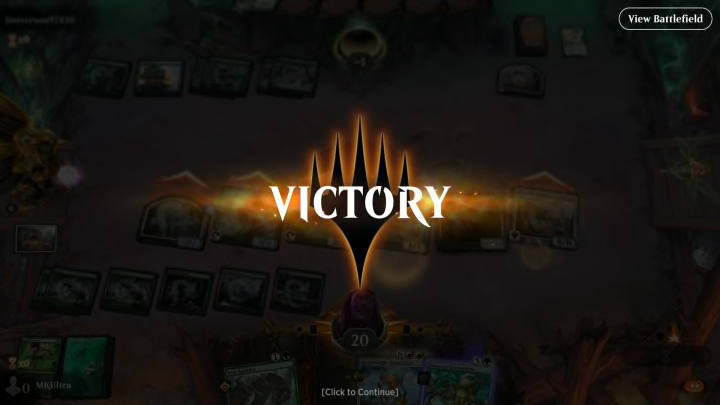MTG Standard Rotation Explained

Standard is Magic: The Gathering's main rotating format, including only the most recent Magic sets as opposed to a more expansive card pool. This prevents the format from being overtaken by powerful cards from decades ago as well as ease new players into Magic with a more manageable chunk of cards to work with. However, Wizards of the Coast announced big changes coming to the format yesterday: Here are the details.
Currently, Standard contains eight sets, beginning with 2021's Midnight Hunt and ending with last month's March of the Machine. Some players have been looking forward to rotation, set to occur in the Fall with the release of Wilds of Eldraine, as a means to refresh the meta and get rid of annoying cards they've been playing against for the last two years.
Notably, Fable of the Mirror Breaker from Kamigawa: Neon Dynasty is seen as Standard "public enemy #1," propping up powerful Red and Black decks that dominate the Standard meta.
Starting with the release of Wilds of Eldraine, standard rotation is changing. Standard sets will now rotate every three years instead of two to improve the overall tabletop Standard experience.
— Magic: The Gathering (@wizards_magic) May 7, 2023
Read about how and why the change is coming on DailyMTG: https://t.co/0XAC3wdrwW
MTG Standard Rotation Explained
In a May 7 article on the official Magic website, Wizards of the Coast announced that Standard rotation would be delayed a year instead of occurring with the release of Wilds of Eldraine. The company also announced all future rotations would occur every three years instead of every two.
Extending the Standard rotation to three years will, we believe, achieve two main points (and an additional benefit) that can make tabletop Standard more enjoyable: This will give current Standard cards more longevity. Time and again, we hear that players want to play with cards they love and enjoy longer. Standard is our only rotating format, and while keeping it fresh is important, we also feel that there's a more effective middle ground. It will allow mechanics and archetypes to be more effectively built on over time. As we moved away from the block model, we gained a lot of flexibility, but we also lost some ability to build on mechanics and themes within a set. With a longer window, we can find more opportunities to build up or revitalize archetypes. Coupled with the point above, that can lead to more diversity, longer-lasting archetypes, and enough competitive churn to keep players engaged. It also gives us stronger tools to create an environment where decks are more "color(s) and mechanic" (like Green-White Toxic or Blue-White Soldiers) and less midrange. With a larger card pool, the format can handle bigger swings with entire decks seeded at once.
- Aaron Forsythe and Billy Jensen
Don’t worry, we're not going to be away for long. #MCBarcelona kicks off on July 28th - 30th!https://t.co/J4QbOlxgQy pic.twitter.com/MAUpqPBaO4
— Magic: The Gathering (@wizards_magic) May 8, 2023
This change may come as disappointing to players who wanted rotation to occur, but may also mark changes in how WOTC handles bans in Standard. The effects of this change are yet to be seen but will likely become known in the coming weeks and months.